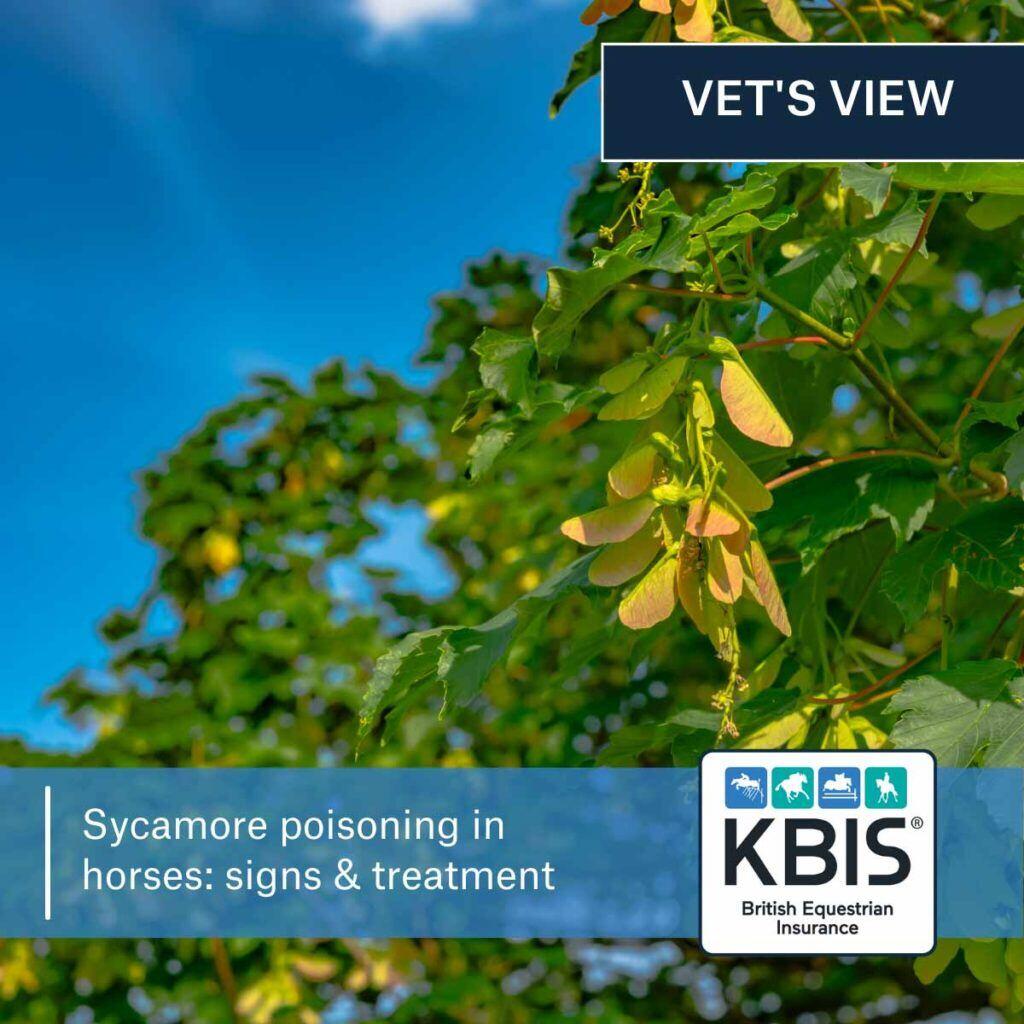What are the signs of atypical myopathy?
- Muscle weakness, soreness or stiffness; horses may struggle to walk, stand or breathe
- Horses appear dull with low-hanging heads
- Lethargy/fatigue
- Muscle trembling
- Colic-like symptoms (e.g. shivering and sweating) except the horse still has an appetite
- Brown or dark red urine
- Some horses may develop heart & respiratory problems
- Loss of ability to stand
How is atypical myopathy confirmed & treated?
How can I reduce the risk of atypical myopathy on my pasture?
- Regularly check your pasture and neighbouring areas for Acer/sycamore plants and seeds. Some ‘helicopter’ seeds can travel up to 200m.
- Avoid letting horses graze pastures with overhanging sycamore trees in the autumn.
- If horses have to remain in pasture where there are sycamore trees, fence off areas where seeds and leaves fall.
- Clear fallen sycamore leaves and seeds from grazing areas.
- In the spring, it is recommended that seedlings are mowed and the cuttings collected & removed as the HGA remains in the plant material after it has been cut.
- Provide clean, easily accessible water.
- Provide access to adequate grass and feed supplementary forage during the autumn.
- Reduce stock density so that there is enough good grazing for every horse.
- You can test for the presence of HGA in your own pasture. This can be done by submitting a sample to the RVC Comparative Neuromuscular Diseases Laboratory (using a sample submission form available online. A fee is payable.).
Case study from KBIS Executive Director, Lawrence Gill
On the Tuesday before Christmas 2022 on a dark, rainy evening, I was sitting at my desk at home when I got a phone call from my partner (Tony) “Bridget is really poorly, the vet is on the way, can you come and help”. At that point, I was, of course, worried but I had no idea what was in store.
Bridget (2yo WB x riding horse), the first of our homebreds had sycamore poisoning and was incredibly unwell. A couple of hours later we then realised that Barry (5 month old WB x riding horse) also had the same condition. I have been lucky enough to have horses for nearly all of my life and prior to working at KBIS spent several years working in racing and as an event groom, but never in all that time have I seen a horse as sick as Bridget was. The next five days were hell for all of us, especially Bridget and Barry.
Bridget and Barry were turned out in a large field with their mother and their sister (1yo TB x riding horse) both of whom did not succumb to the illness. There were no sycamore trees in the field and had been plenty of grass. The weather had been cold and the ground frozen, so we were feeding haylage in the field. We believe the sycamore seeds had blown in and the horses had been foraging because of the cold weather.
We were lucky enough to be able to use some stables belonging to a kind family in the village and there we set up camp (quite literally). We had all four horses in stables with Bridget and Barry on drips. We thankfully manged to be able to do this at home rather than admitting them to hospital. Our wonderful vet, Helen, came multiple times a day to administer some of the stronger pain relief and we were able to manage their pain the rest of the time. We set up a bed in the tack room and I set up my office there too. We took it in turns with Tony sleeping up there and me working from there during the day so that between us, we were constantly monitoring them and were there to change drip bags and administer pain relief.
Bridget seemed to suffer the most, we think that as Barry was not fully weaned and had a smaller muscle mass he was not affected as much despite having equally high levels of muscle enzymes in the blood, similar to a horse that has tied up much higher.
The first three days were the hardest for all, they almost seemed to get worse before, thankfully, getting better. Bridget could go from looking reasonably fine to on the ground groaning in pain in the space of ten minutes and then return back to seemingly well in just as quick a time.
Initially, Bridget spent a lot of time laying down during the day but whenever she was checked she got up and looked fine. The first obvious symptoms she showed were very similar to colic combined with ataxia. This improved with pain relief and fluids after around 48 hours but the low head carriage, laboured breathing and trembling lasted nearly a full five days. They were on fluids and pain relief for five days and we kept them in for around three weeks to make sure they had recovered fully. It was a very slow process but they have both made a full recovery and are back out (in a different field!).
We are incredibly grateful to our vet Helen and her team at VT vets for everything they did to save our lovely little homebreds, without her quick reactions and expert knowledge Bridget and Barry would not be here today. We are hoping to back Bridget (now three) this summer and hopefully never witness this horrid condition again.

